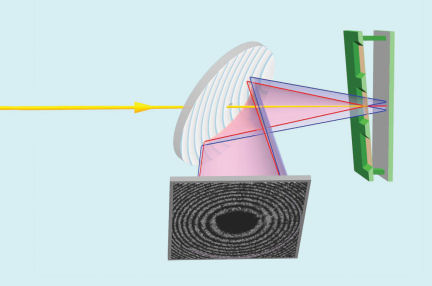- More than 2 years ago
Occasionally, science museums can stimulate new science. Inspired by an exhibit on an optical experiment performed by Isaac Newton, physicists have taken the first X-ray snapshot of a microscopic explosion.

Physicists Henry Chapman and Saa Bajt took their daughter to the Chabot Space and Science Center in Oakland, Calif., in 2005. There, they saw a replica of an experiment in which Newton had sent a beam of light through a hole in a screen. The beam reflected off a mirror and back onto the screen—where Newton was surprised to see concentric rings of light.
Scientists later determined that the rings were due to microscopic specks of dust. Light bounced off each dust grain twice, on its way to the reflective surface and on the way back. Interference between those two sources of scattered light, as crests and troughs of their waves either reinforced or canceled each other, created the rings.
Chapman and Bajt, both of Lawrence Livermore (Calif.) National Laboratory, realized that they could set up a similar experiment at FLASH, a laser facility in Hamburg, Germany. FLASH is the first free-electron laser to operate in the extreme ultraviolet, or soft–X-ray, part of the spectrum. Free-electron lasers use bursts of electrons to create pulses of laser light lasting only femtoseconds, or millionths of a billionth of a second. These devices could in a few years create high-energy, or hard, X rays that have wavelengths small enough to resolve single atoms.
Such bursts of energy would explode most samples. But scientists hope that the bursts will be short enough—lasting as little as a single femtosecond—that X rays can pass through the sample and carry off information before the sample’s atoms have moved appreciably (SN: 4/21/07, p. 253).
To better understand the dynamics of such an explosion, Bajt, Chapman, and their collaborators sent soft X rays from the FLASH laser through a hole in the nonreflecting side of a mirror and onto plastic balls, just 140 nanometers wide, fixed to a thin membrane. The beam then bounced off a second mirror and hit the balls again, hundreds of femtoseconds later. X rays scattered in those two encounters reflected from the first mirror and onto a detector, where they formed concentric circles.
From the size of these interference fringes, the scientists reconstructed the shapes of the balls as they shattered. By adjusting the position of the second mirror, the scientists took snapshots at different time intervals. “It was the first time we have been able to measure the explosion,” Chapman says. The team reports its results in the Aug. 9 Nature.
Andrea Cavalleri of the University of Oxford in England says that the experiment “gives hope” that hard–X-ray lasers will be able to observe femtosecond-scale dynamical processes, such as chemical reactions, down to the resolution of single atoms.







